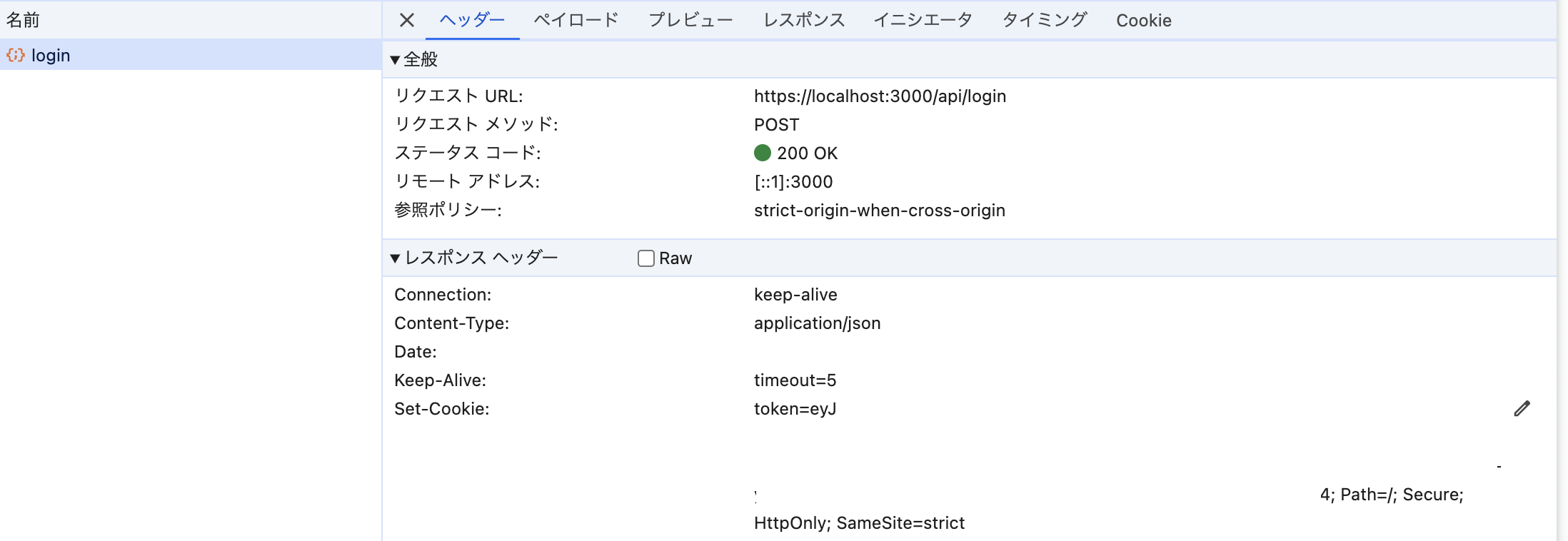はじめに
React の Server Components の登場により、SPA が主軸だったフロントエンドの世界は大きく変わり、サーバーを視野に入れる必要が出てきました。そうしたトレンドの中でも、Next.js はフロントエンドの領域をサーバーまで押し広げる機能のサポートをいち早く行ってきました。私自身も Next.js をよく使うことがあり、この流行についていこうとしている一人です。しかし、従来の SPA とは勝手が違うため、いくつか課題があります。
中でも、認証トークンの管理をクライアントで行っていると、Server Components からはアクセスできないという問題があります。そこで今回は、Next.js v14 に Liff を導入し、クライアントでの認証トークンの管理を Cookie に移す方法を紹介します。なお、やや無理のある実装をしているため、参考程度にしてください。
前提
- Next.js v14 app router, server components 使用したアプリケーションがすでに存在する
- Liff v2
詳細
1. Line Console 上から Liff の id を取得する
Line Developersからログインし、Liff の 登録を行います。
Liff の Endpoint は https://localhost:3000 に設定します。https でしか登録できないため、スキーマを https にしていることに注意をしてください。
登録が完了すると Liff の ID が発行されるので、それを.env に登録してください。
Liff は Client 側でしか動作しないため、環境変数は NEXT_PUBLIC_ から始める必要があります。
NEXT_PUBLIC_LIFF_ID=xxxx-yyyy
2. Liff をプロジェクトに導入する
Liff module をインストールする
pnpm i @line/liff
Liff は最初に Client での初期化が必要です。
そのため、client component 上で Liff の初期化処理を作成します。
'use client';
import liff, { type Liff } from '@line/liff';
import {
createContext,
useState,
useEffect,
FC,
ReactNode,
useContext,
} from 'react';
type LiffContextType = {
liffState: Liff | null;
liffError: string | null;
};
const LiffContext = createContext<LiffContextType>({
liffState: null,
liffError: null,
});
export const useLiff = (): LiffContextType => {
const context = useContext(LiffContext);
return context;
};
/**
* Liff スターターテンプレートがあるのでこちらを参考にしています
* @see https://github.com/line/create-liff-app/blob/main/templates/nextjs-ts/pages/_app.tsx
*/
export const LiffProvider: FC<{ children: ReactNode }> = ({ children }) => {
const [liffState, setliffState] = useState<Liff | null>(null);
const [liffError, setLiffError] = useState<string | null>(null);
useEffect(() => {
liff.init(
{ liffId: process.env.NEXT_PUBLIC_LIFF_ID || '' },
() => { setliffState(liff); }, // 成功時に liff をセット
(error) => {
console.error('LIFF initialization failed', error);
setLiffError(error.toString()); // エラー時にエラーメッセージをセット
},
);
}, []);
return (
<LiffContext.Provider value={{ liffState, liffError }}>
{children}
</LiffContext.Provider>
);
};
Layout で LiffProvider 呼び出します。
export default function RootLayout({
children,
}: Readonly<{
children: React.ReactNode;
}>) {
return (
<html>
<body>
<LiffProvider>
{children}
</LiffProvider>
</body>
</html>
);
}
3. Liff のトークンを Cookie に保存する
Liff が初期化された後、Line Developers のエンドポイントにリダイレクトされます。その際、エンドポイントから API Route へリクエストを投げて Cookie にトークンを保存します。
export default function Page() {
const { liffState, liffError } = useLiff();
const [authenticated, setAuthenticated] = useState(false);
const login = useCallback(async () => {
const token = liffState?.getAccessToken();
const res = await fetch('/api/login', {
method: 'POST',
headers: { 'Content-Type': 'application/json' },
body: JSON.stringify({ token }),
});
if (!res.ok) {
console.error('failed to login');
return;
}
setAuthenticated(true);
window.location.href = '/<トップ画面>';
}, [liffState, setAuthenticated]);
useEffect(() => {
if (!liffState || authenticated) return;
login();
}, [liffState, authenticated, login]);
if (liffError) {
return 'エラーが発生しました';
}
if (!authenticated) {
return '認証中...';
}
return '認証完了';
}
API Route で Cookie を設定します。
この時、token の検証を行うことを忘れないようにしてください。
export const POST = async (req: NextRequest) => {
const body = (await req.json()) as { token: string };
const token = body.token;
console.log('token', token);
// Verify the token
const verifyRes = await fetch(
`https://api.line.me/oauth2/v2.1/verify?access_token=${token}`,
);
if (!verifyRes.ok) {
console.error('failed to verify token');
return NextResponse.error();
}
// ユーザー登録処理など...
const res = NextResponse.json({ message: 'success' });
res.cookies.set({
name: 'token',
value: token,
httpOnly: true,
sameSite: 'strict',
secure: true,
});
return res;
};
4. Cookie のセットが確認できる
ここまでくると実際に挙動を確認することができます。Next.js は 13.5 から experimental ではあるものの HTTPS でのローカル開発がサポートされています。
scripts: {
"dev-secure": "next dev --experimental-https"
}
$ pnpm dev
https://localhost:3000 が起動
画面にアクセスすると、init -> api/login(cookie がセット) -> トップ画面 と遷移することが確認できます。

5. Cookie からトークンを取得する
これで、Server Components や middleware からもトークンを読み込むことができるため、認証やログインユーザーの識別が可能になります。
'server only';
import { cookies } from 'next/headers';
export const GET = async (req: NextRequest) => {
const token = cookies().get('token');
if (!token?.value) {
return NextResponse.error();
}
// 認証 ...
// ユーザー情報を取得する処理など...
};
まとめ
本記事では、Next.js v14 で Liff を導入し、Cookie 経由で認証を実現する方法について紹介しました。
認証トークンをクライアントから Cookie に移し、Server Components やミドルウェアからもトークンにアクセスできるようにすることで、より Server 主体のアーキテクチャを構築することが可能です。